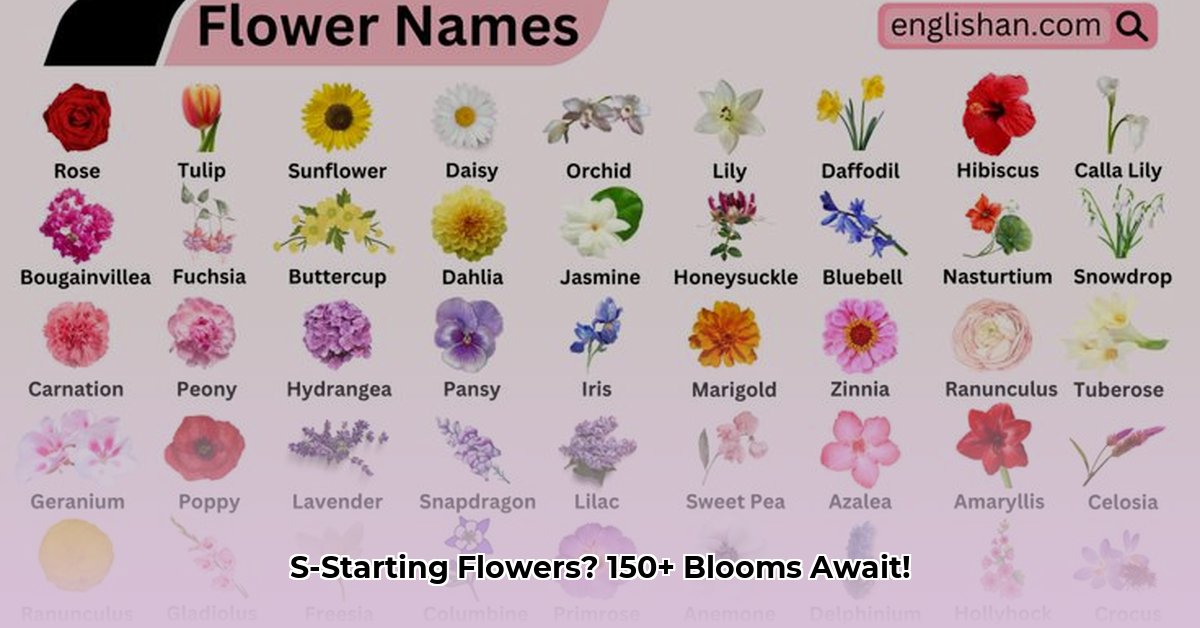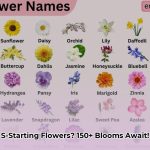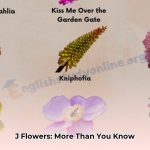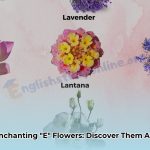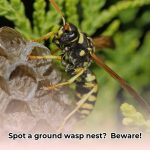Flowers starting with “S” offer a diverse and captivating collection, from the iconic sunflower to the fragrant sweet pea. This guide explores a wide range of these blooms, providing insights into their unique characteristics, growing conditions, and potential challenges. Whether you’re a seasoned gardener or just starting, this guide helps you cultivate a thriving “S” garden.
Exploring the World of “S” Flowers
The realm of “S” flowers is vast and varied. This section highlights some prominent members and delves into their individual traits.
Sunflowers (Helianthus annuus): Beacons of Sunshine
Sunflowers, with their sunny disposition and towering stature, are a garden favorite. These easy-to-grow annuals thrive in full sun and well-drained soil. Their remarkable heliotropism, the ability to track the sun’s path, is a captivating sight. Beyond their beauty, sunflowers offer edible seeds, attracting birds and providing a healthy snack.
Snapdragons (Antirrhinum majus): Playful Dragon Blooms
Snapdragons, aptly named for their dragon-like blooms, introduce a touch of whimsy to gardens. These vibrant flowers come in a spectrum of colors, from soft pastels to bold hues. Pinching back young plants encourages bushier growth, while deadheading spent blooms promotes continuous flowering. Snapdragons prefer full sun and well-drained soil. Some research suggests potential medicinal properties, adding to their allure.
Snowdrops (Galanthus nivalis): Harbingers of Spring
Snowdrops, delicate white bells emerging from winter’s grasp, symbolize hope and renewal. These early spring bloomers thrive in partial shade and moist, well-drained soil. Their resilience and understated beauty make them a welcome sight in the awakening landscape.
Shasta Daisies (Leucanthemum × superbum): Timeless Elegance
Shasta daisies, with their classic white petals and golden centers, embody timeless elegance. These low-maintenance perennials attract pollinators and provide a continuous display of cheerful blooms throughout the summer. Deadheading encourages further flowering, extending their season of beauty. They prefer full sun and well-drained soil.
Scarlet Sage (Salvia splendens): Hummingbird Magnet
Scarlet sage, with its fiery red blooms, ignites gardens with vibrant color. This annual is a hummingbird favorite, attracting these tiny dynamos with its nectar-rich flowers. Thriving in full sun and well-drained soil, scarlet sage adds a tropical touch to borders and containers. Consistent watering, especially during summer, is key to their flourishing.
Siberian Iris (Iris sibirica): Graceful and Adaptable
Siberian irises, with their elegant purple-blue blooms and distinctive markings, add a touch of sophistication to gardens. These moisture-loving perennials tolerate full sun to partial shade, and their sword-like foliage provides architectural interest even when not in bloom.
Statice (Limonium sinuatum): Everlasting Beauty
Statice, also known as sea lavender, is renowned for its papery blooms that retain color and shape when dried, making them perfect for everlasting arrangements. These resilient flowers flourish in full sun and well-drained soil, tolerating dry conditions. Though traditionally purple or lavender, newer varieties offer a wider color range.
Stock (Matthiola incana): Evening Fragrance
Stock flowers, with their fragrant, spire-like blooms, imbue gardens with a sweet, intoxicating scent, particularly in the evening. These flowers, available in various colors, are a delightful addition to cutting gardens. They prefer full sun and well-drained soil to maximize their bloom and fragrance.
Salvia (Salvia spp.): Diverse and Vibrant
Salvia, a diverse genus, encompasses a wide array of colors and forms, from fiery reds and oranges to calming blues and purples. These pollinator-attracting plants thrive in full sun and well-drained soil. Some species, like Salvia officinalis (sage), offer culinary and potential medicinal benefits. Ongoing research explores the antioxidant and anti-inflammatory properties of certain Salvia compounds.
Sedum (Hylotelephium telephium): Resilient Succulents
Sedum, a group of succulents, features fleshy leaves and clusters of small flowers. These drought-tolerant plants thrive in full sun to partial shade and well-drained soil and are excellent choices for rock gardens and dry landscapes.
Other Noteworthy “S” Flowers
The “S” flower family extends beyond these highlights. Consider exploring:
- Sweet Pea (Lathyrus odoratus): Fragrant climbing vines.
- Spider Lily (Hymenocallis spp./Tradescantia pallida*): Unique, spidery blooms.
- Scabiosa (Scabiosa spp.): Pincushion-like flowers attractive to pollinators.
- Starflower (Ipheion uniflorum): Star-shaped blooms in shades of blue, white, and pink.
- Stokesia (Stokesia laevis): Daisy-like flowers in shades of blue and purple.
- Sweet Alyssum (Lobularia maritima): Delicate, fragrant white flowers.
- Strelitzia (Bird of Paradise) (Strelitzia reginae): Exotic, bird-like blooms.
- Sunset Hibiscus (Hibiscus rosa-sinensis): Large, showy tropical blooms.
- Showy Stonecrop (Hylotelephium spectabile): Late-blooming succulent with pink flower clusters.
- Sweet William (Dianthus barbatus): Clusters of fragrant flowers in various colors.
- Shrub Rose (Rosa spp.): A vast category of roses, each with their own charm.
Growing and Caring for “S” Flowers
While each “S” flower has specific needs, here’s a general guide:
| Feature | Considerations |
|---|---|
| Sunlight | Ranges from full sun (sunflowers, statice) to partial shade (snowdrops). Research specific needs. |
| Water | Varies from moderate (snapdragons) to low (sedum). Well-drained soil is crucial for most. |
| Soil | Well-drained soil rich in organic matter is generally preferred. |
| Maintenance | Deadheading (removing spent blooms) promotes continuous flowering in many species. |
| Pests & Diseases | Common issues include aphids, powdery mildew, and root rot. Address with appropriate treatments like insecticidal soap, fungicides, and ensuring proper drainage. |
Design Ideas with “S” Flowers
“S” flowers offer diverse design possibilities. Combine tall sunflowers with cascading sweet peas for contrasting heights and textures. Create fragrant pathways with stock or salvia. Intersperse various “S” flowers for visual interest and potential ecosystem benefits, such as pest deterrence and attracting beneficial insects. While ongoing research explores the complexities of plant interactions, some experts suggest that diverse plantings may enhance garden health.
This comprehensive guide equips you to explore and cultivate the captivating world of “S” flowers. Remember to research specific varieties for optimal care, and enjoy the journey of discovery and creation in your garden!
- Grass Forever in Livermore: Your Guide to Artificial Turf - April 22, 2025
- German Roaches vs. American Roaches: Key Differences and Control - April 22, 2025
- 150+ Flowers That Start With S: A Comprehensive Guide - April 22, 2025
